
Fire protection systems are critical safeguards designed to prevent loss of life, property damage, and business disruption. Yet, real-world incidents continue to highlight that even the most advanced systems can fail if they are not properly designed, maintained, or integrated into organizational culture. By examining actual fire events, we can uncover essential lessons that help us strengthen safety and preparedness.
- The Importance of Proper System Design
One of the most crucial lessons is the need for fire protection systems to be designed according to the specific risks of a building or facility.
For example, in 2017, a major fire occurred at a large cold storage warehouse in the United States. The warehouse used a traditional sprinkler system designed for ordinary combustibles. However, it stored large quantities of plastics, which burn intensely and rapidly. The system was overwhelmed, leading to extensive damage and costly downtime.
Lesson: Fire protection systems must be tailored to the specific fire loads and hazards present. Risk assessments and hazard analyses should guide system selection (e.g., special suppression agents for high-challenge storage, enhanced sprinkler designs, or additional fire barriers). - Regular Maintenance Cannot Be Neglected
A fire in a shopping mall in the Philippines in 2017 tragically killed dozens of people. Investigations revealed that many sprinklers were not operational, fire alarms did not function correctly, and some fire doors were locked or obstructed.
Similarly, in 2013, a fire in a Brazilian nightclub claimed over 240 lives. The investigation showed that the venue’s fire extinguishers were empty, and there were no functional sprinklers or adequate emergency lighting.
Lesson: Even the best-designed systems fail without proper maintenance. Regular inspections, functional testing, and timely repairs are critical. Compliance with national and local fire codes and standards (such as NFPA 25 for sprinkler system maintenance) must be strictly enforced. - The Role of Human Behavior and Training
A functional system is only effective when people know how to use it. In a high-rise residential fire in London (Grenfell Tower, 2017), residents lacked clear evacuation instructions, and confusion about alarm signals delayed evacuation efforts.
In another case, a manufacturing facility fire escalated because employees didn’t know how to operate manual suppression systems and hesitated to use portable extinguishers.
Lesson: Regular fire drills and practical training sessions empower occupants and staff to respond appropriately. Emergency procedures should be clearly communicated and periodically refreshed. Fire safety is not just about equipment — it’s also about human readiness. - Compartmentation and Passive Protection are Critical
In many incidents, fire spread rapidly due to poor compartmentation. For example, the MGM Grand Hotel fire in Las Vegas in 1980 resulted in 85 fatalities, partly because smoke traveled quickly through elevator shafts and ventilation systems, bypassing passive fire barriers.
Lesson: Passive fire protection (fire doors, fire-rated walls, and proper sealing of penetrations) is just as vital as active systems. Fire and smoke compartmentation can slow fire spread, allowing more time for evacuation and for suppression systems to work effectively. - Reliable Water Supply is Essential
Several industrial fires have highlighted vulnerabilities in water supply systems. In one case in India, a warehouse fire spread uncontrollably because the facility’s water tank was empty due to poor monitoring, and local hydrants were too far away or inoperable.
Lesson: Water supply reliability must be ensured through dedicated fire tanks, booster pumps, and backup power for pump systems. Routine checks on water levels and pump readiness should be part of standard maintenance protocols. - Early Detection Saves Lives
In multiple hotel and hospital fires worldwide, inadequate or malfunctioning smoke detection systems have delayed alerting occupants and emergency services. In a hospital fire in South Korea in 2018, an absence of early warning systems contributed to over 40 deaths.
Lesson: Install automatic fire detection systems (smoke and heat detectors) that are regularly tested and maintained. Integrating detection systems with alarm and suppression systems enables faster response and greater chance of containment. - System Integration and Communication
Many large-scale incidents reveal gaps in integrating different fire safety systems. For example, when alarms do not trigger sprinkler activation or fail to notify emergency services automatically, precious minutes are lost.
Lesson: Fire protection systems should not operate in silos. Fire detection, alarms, sprinklers, smoke control, and emergency communication systems must work together seamlessly. Integration ensures coordinated responses and enhances overall effectiveness. - Emergency Planning and Business Continuity
Beyond life safety, fires can cripple business operations. A large electronics manufacturer in Thailand lost over $200 million in a fire because there was no comprehensive emergency or recovery plan, and data backups were stored onsite and destroyed.
Lesson: In addition to fire protection systems, organizations need robust emergency response and business continuity plans. This includes safe data backups (offsite or cloud), supply chain contingencies, and defined roles for key personnel during a crisis. - Compliance Alone is Not Enough
A common misconception is that meeting minimum code requirements guarantees safety. However, many major fires occurred in buildings technically compliant with local regulations, yet not adequately prepared for real hazards.
Lesson: Go beyond compliance. Conduct periodic risk assessments, engage third-party fire safety experts, and continuously improve systems and practices. Safety standards evolve, and so should protection strategies. - Learning from Incidents to Drive Improvement
After every fire, investigations often uncover overlooked warning signs, deferred maintenance, or procedural gaps. Unfortunately, these lessons are sometimes forgotten once headlines fade.
Lesson: Develop a culture of continuous learning. Share findings from incidents internally, update fire safety plans, and involve all stakeholders in lessons-learned sessions. Continuous improvement is key to preventing repeat tragedies.
Conclusion
Real-world fire incidents starkly remind us that fire protection systems are not merely technical installations but life-saving measures that demand ongoing attention. The best-designed sprinkler system is worthless if it has no water supply; the most advanced alarm is useless if people don’t know how to respond.
By studying past incidents, we understand that true fire safety relies on a combination of reliable systems, informed people, regular maintenance, robust planning, and a commitment to constant improvement.
In fire protection, complacency is the greatest enemy. Only through vigilance, proactive measures, and learning from real-world experiences can we protect lives, property, and the continuity of operations.
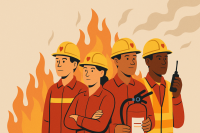
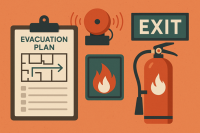
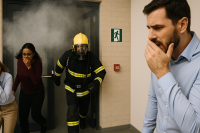
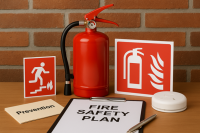
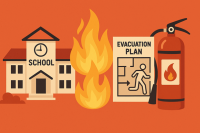
Leave A Comment